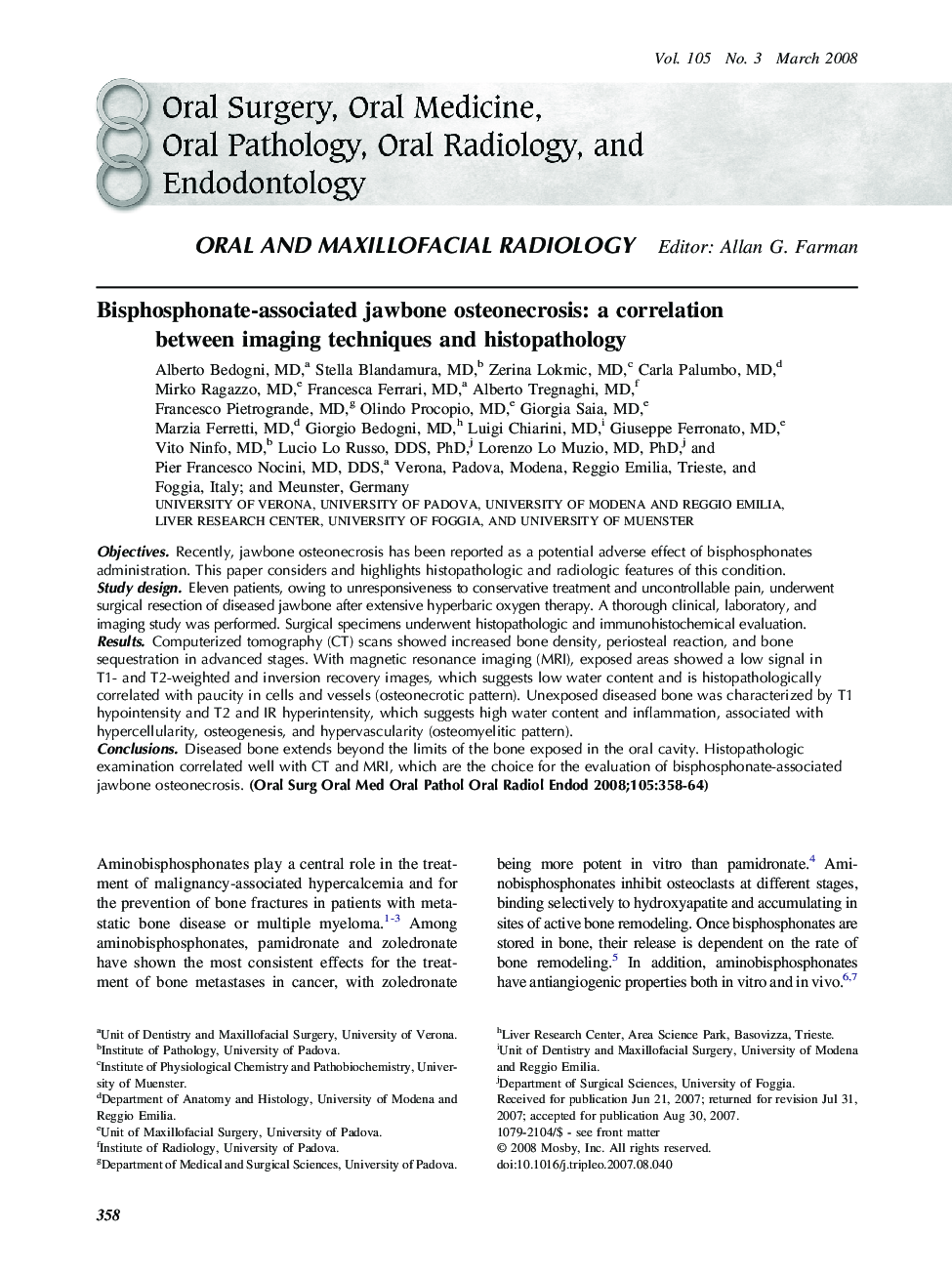| Article ID | Journal | Published Year | Pages | File Type |
|---|---|---|---|---|
| 3169041 | Oral Surgery, Oral Medicine, Oral Pathology, Oral Radiology, and Endodontology | 2008 | 7 Pages |
ObjectivesRecently, jawbone osteonecrosis has been reported as a potential adverse effect of bisphosphonates administration. This paper considers and highlights histopathologic and radiologic features of this condition.Study designEleven patients, owing to unresponsiveness to conservative treatment and uncontrollable pain, underwent surgical resection of diseased jawbone after extensive hyperbaric oxygen therapy. A thorough clinical, laboratory, and imaging study was performed. Surgical specimens underwent histopathologic and immunohistochemical evaluation.ResultsComputerized tomography (CT) scans showed increased bone density, periosteal reaction, and bone sequestration in advanced stages. With magnetic resonance imaging (MRI), exposed areas showed a low signal in T1- and T2-weighted and inversion recovery images, which suggests low water content and is histopathologically correlated with paucity in cells and vessels (osteonecrotic pattern). Unexposed diseased bone was characterized by T1 hypointensity and T2 and IR hyperintensity, which suggests high water content and inflammation, associated with hypercellularity, osteogenesis, and hypervascularity (osteomyelitic pattern).ConclusionsDiseased bone extends beyond the limits of the bone exposed in the oral cavity. Histopathologic examination correlated well with CT and MRI, which are the choice for the evaluation of bisphosphonate-associated jawbone osteonecrosis.
